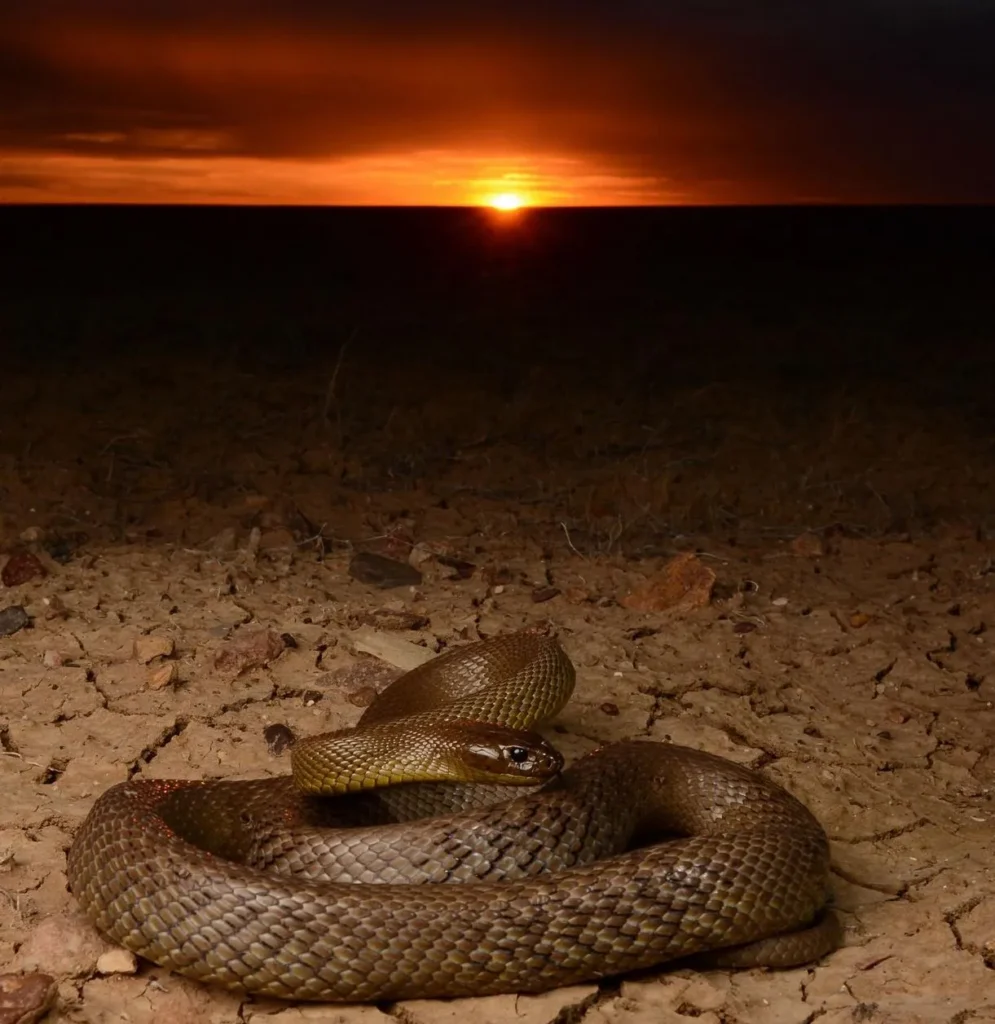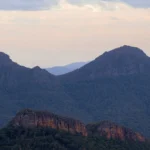Uluru, the big rock in the middle of Australia’s Red Centre, is a must-see for many outback travellers. As one of Australia’s most famous landmarks, Uluru-Kata Tjuta National Park has a range of original experiences, from the landscapes to the Aboriginal culture. But like many wild places in Central Australia, Uluru has venomous creatures, including snakes. With so many species of snakes in the area, it’s natural to wonder if it’s safe to go walking around this beautiful and deadly place. In this article, we’ll look at the types of snakes that live in the area, how common they are and most importantly, how to stay safe around them.
Types of Snakes Around
The desert around Uluru is home to several species of snakes. While the thought of snakes might be daunting, most snakes are not aggressive and will avoid humans.
1. Woma Python (Aspidites ramsayi)
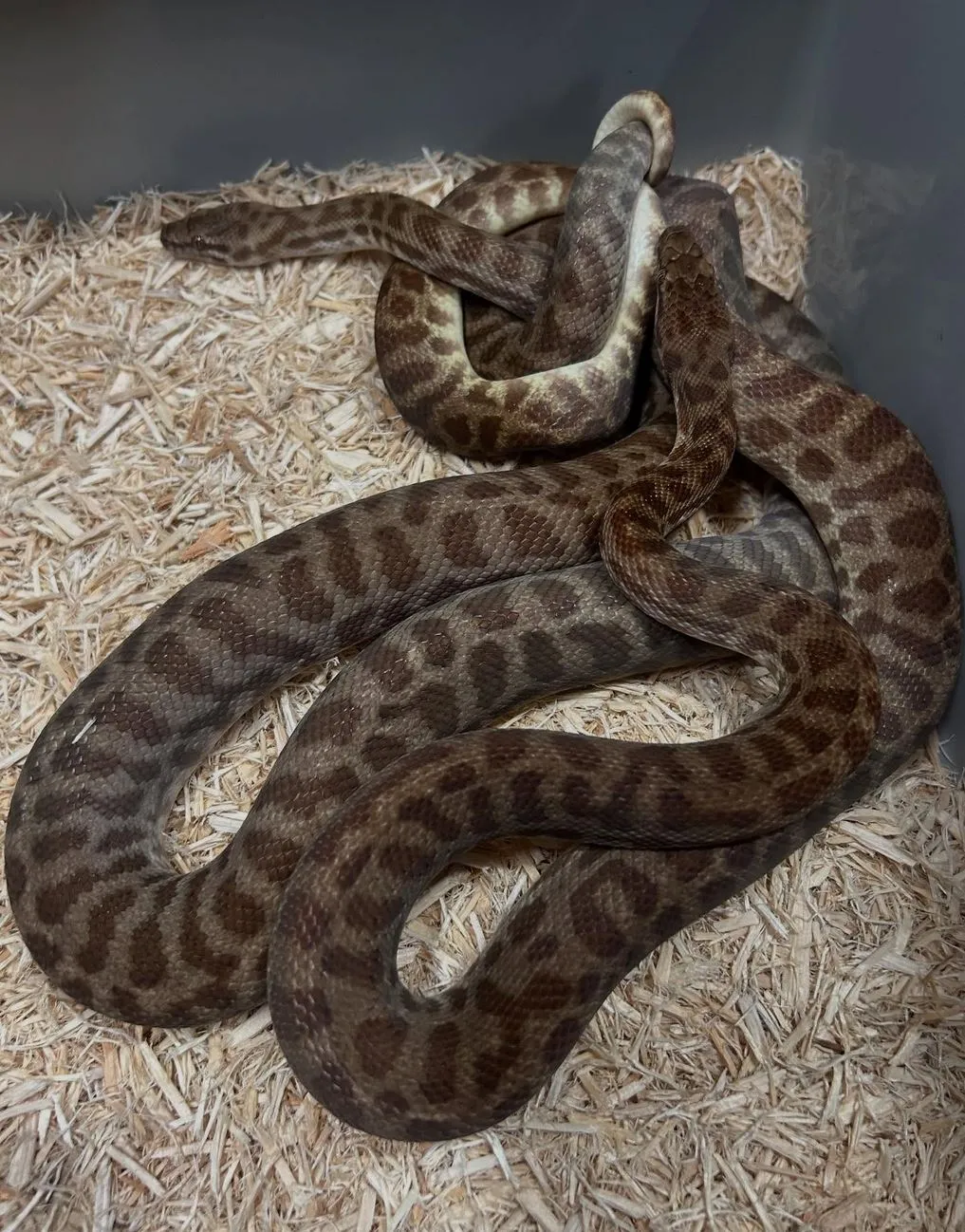
- Appearance: Non-venomous, smooth, glossy, light brown or tan with darker bands.
- Habitat: Arid and semi-arid areas, deserts and woodlands.
- Behaviour: Non-aggressive, nocturnal, no threat to humans.
2. Desert Death Adder (Acanthophis pyrrhus)
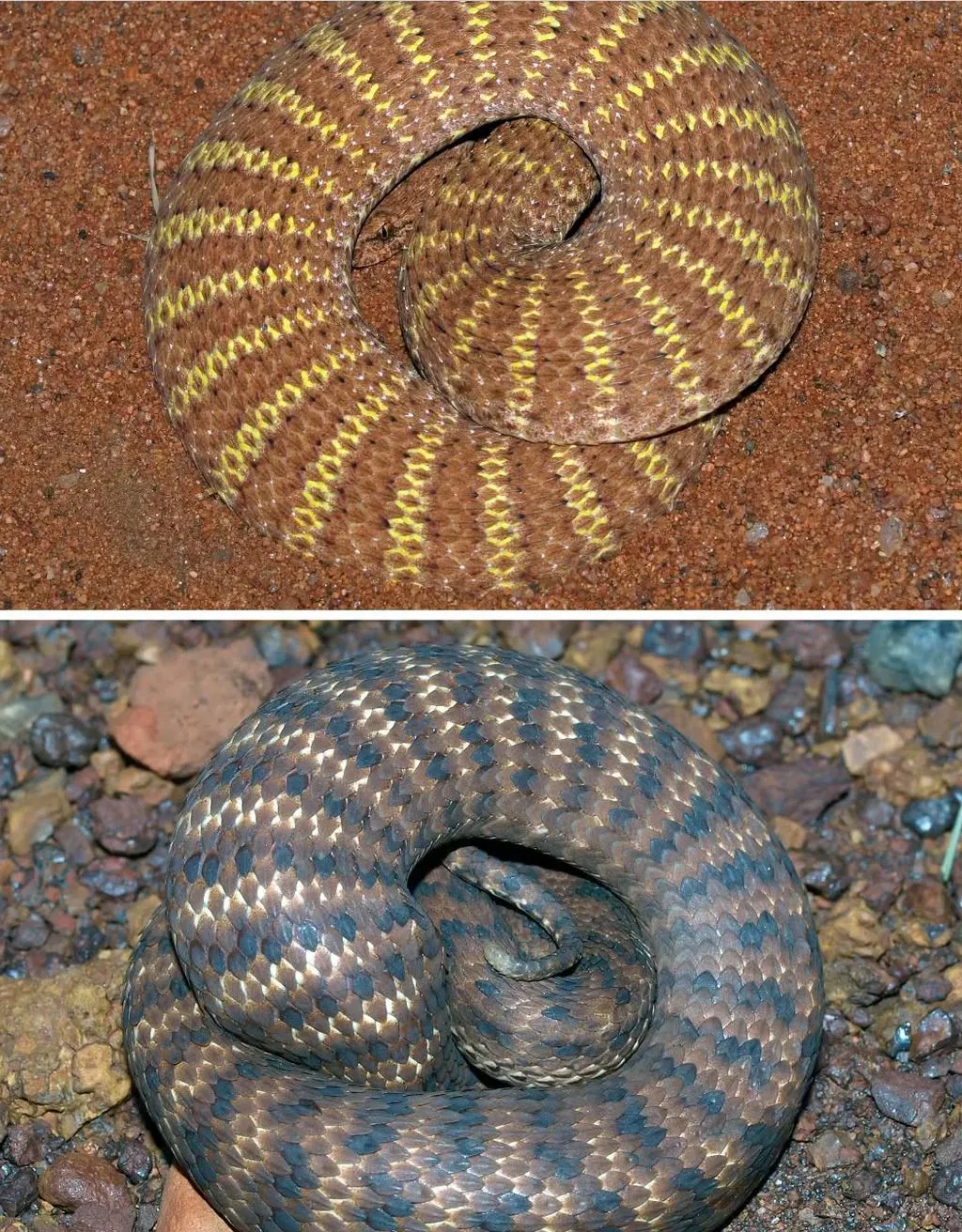
- Appearance: Short, stout snake with triangular head and reddish, orange or brown colour to blend in with the sand.
- Venom: Venomous but will avoid humans unless provoked.
- Behaviour: Ambush predator that hides under leaf litter or sand, waiting for prey.
3. Mulga Snake (Pseudechis australis)
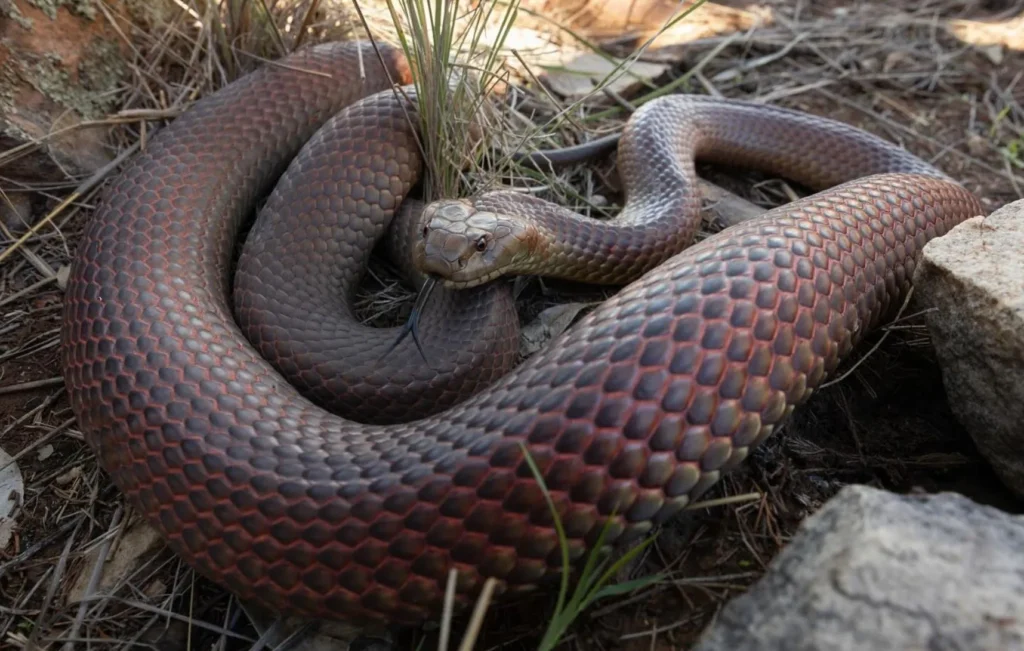
- Appearance: Large and chunky with coppery brown or dark brown body.
- Venom: Venomous but will run from threats.
- Behaviour: Diurnal (active during the day) and found in many habitats, including deserts.
4. Western Brown Snake (Pseudonaja nuchalis)
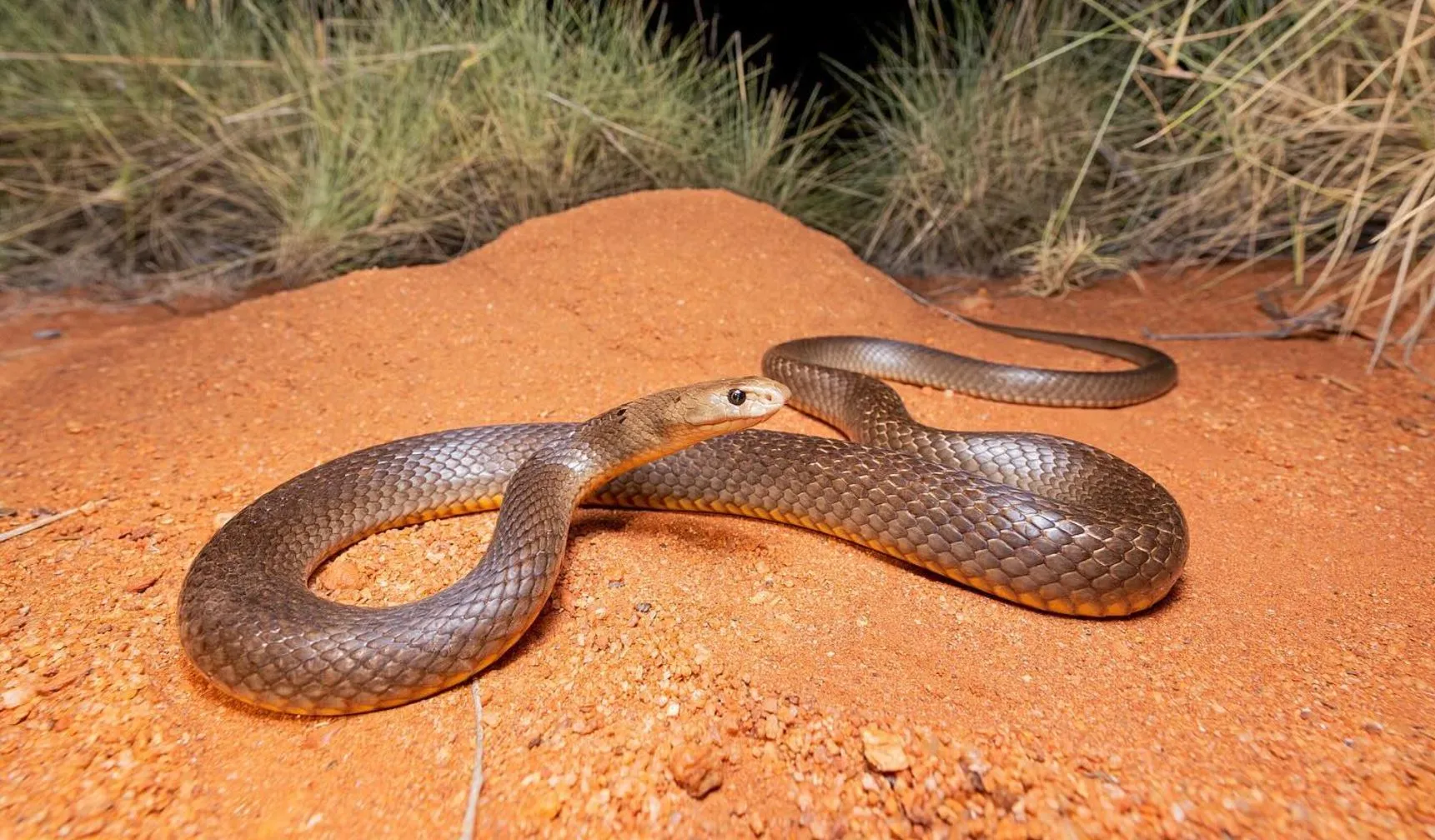
- Appearance: Can be brown to reddish-orange with a slender body.
- Venom: Extremely venomous but shy and will avoid humans.
- Behaviour: Fast-moving and active during the day, often found under rocks or logs.
5. Bandy-Bandy Snake (Vermicella annulata)
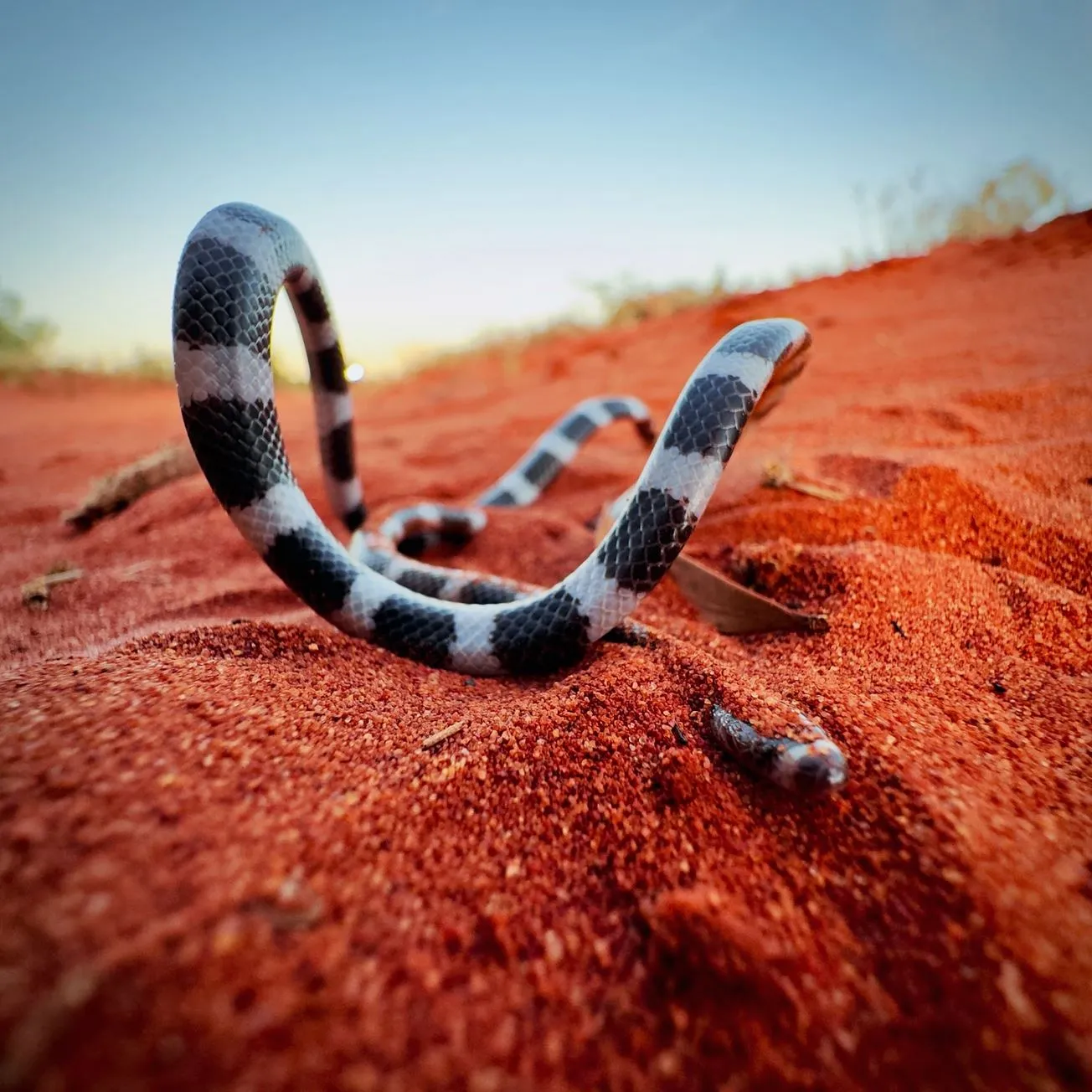
- Appearance: Black and white banded, can’t be mistaken.
- Venom: Mildly venomous, no threat to humans.
- Behaviour: Nocturnal and non-aggressive, more of a curiosity than a threat.
6. Brown Snake (Pseudonaja spp.)
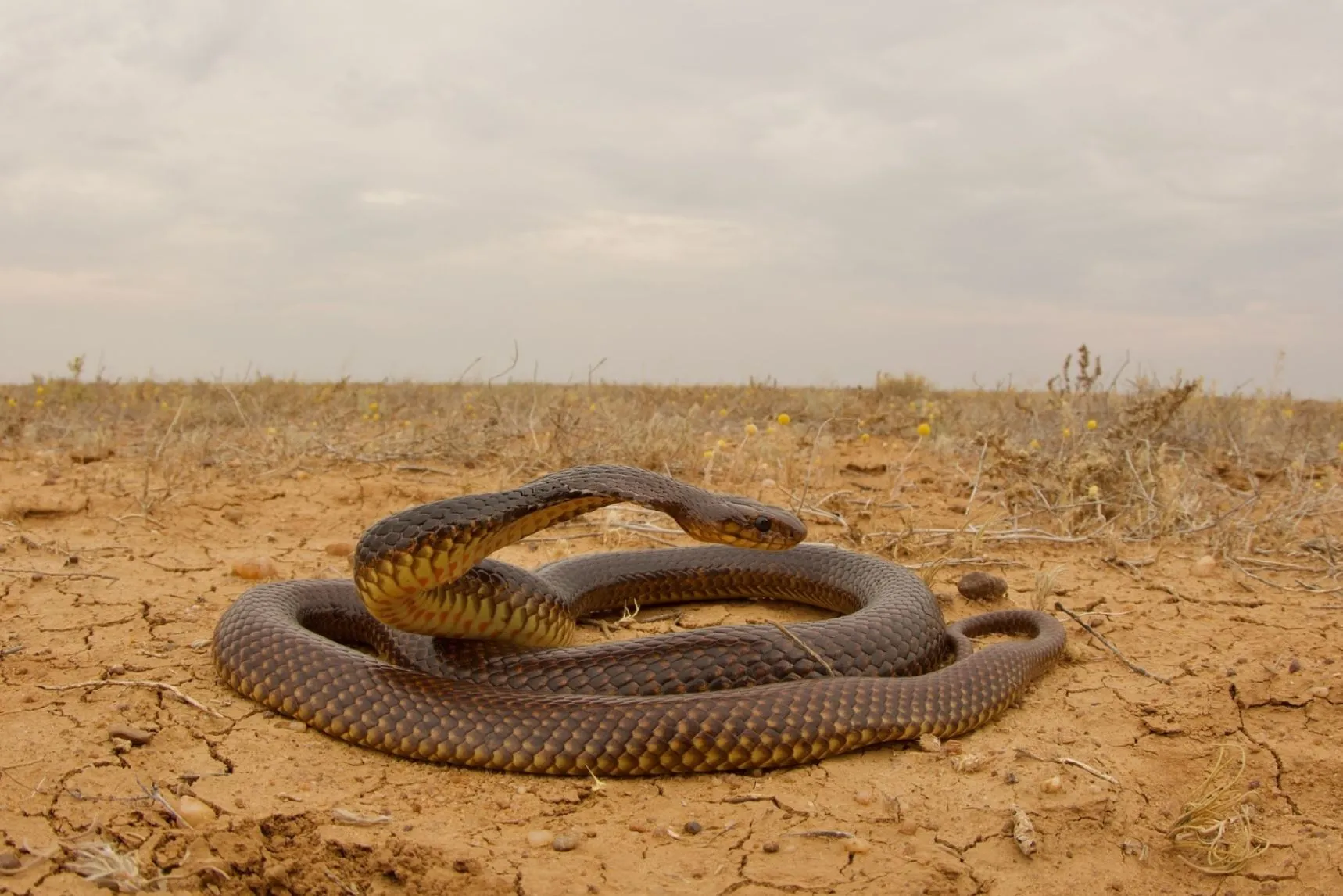
- Appearance: Slender body, many colours from light brown to black.
- Venom: One of the most venomous snakes in Australia, but will avoid humans.
- Behaviour: Fast and alert, often hiding under rocks, logs or within shrubs.
Snake Encounters: Are They Common?
Lots of tourists worry about snakes at Uluru. Snakes are present but rarely seen as they avoid human activity. Snakes are shy and hide. They move away when they sense human footprints.
Encounters are most likely during warmer months (October to April) when snakes are most active. They might be found basking in the sun on walking trails or hiding under rocks and bushes. Most tourists won’t see a snake unless they go off the path.
Other areas like Alice Springs and Kings Canyon have similar desert conditions, so snakes can be found there too. Tjuta National Park and Watarrka National Park have had sightings of venomous snakes like brown snakes, death adders and mulga snakes.
Best Times to Stay Alert
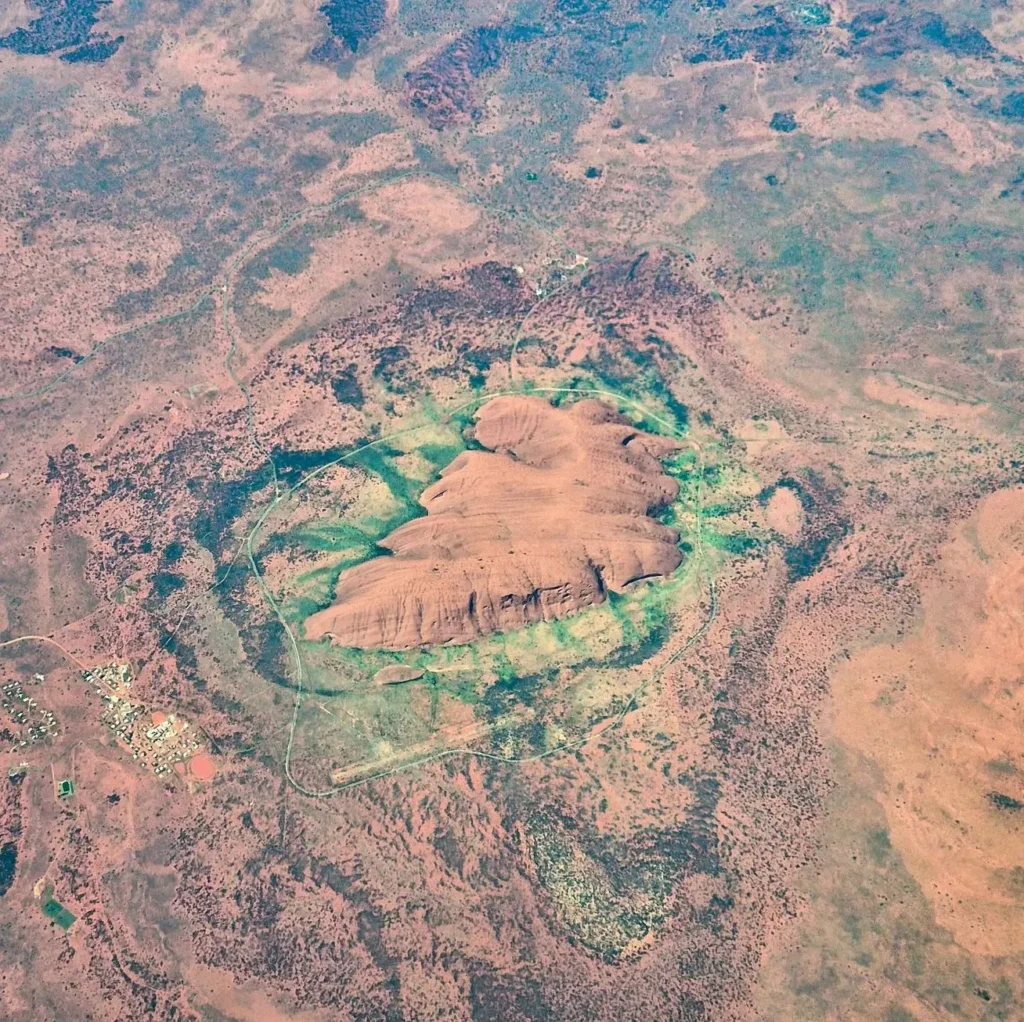
Snakes are more active in the warmer months as they are cold-blooded and need external heat to regulate their body temperature.
- Active Period: October to April
- Time of Day: Early morning and late afternoon.
- Hiding Spots: Rocks, logs, bushes, and crevices are where snakes hide for shade or prey.
During the cooler months (May to September) snakes go into brumation (like hibernation) so they are less likely to be seen.
How to Stay Safe
While the risk of snake bites at Uluru is low, it’s always best to take precautions to minimize the chance of seeing a snake. Here’s how:
- Please stay on the path: Uluru and Kata Tjuta National Park have formed tracks, and it’s best to stick to them when hiking or sightseeing. Don’t walk off the track into the bush, where snakes are more likely to be.
- Wear the right gear: Long pants, boots, and thick socks are a must when hiking in the desert, as they will protect you from snake bites. Avoid sandals or open-toed shoes as they leave your feet exposed to bites.
- Watch your step: Snakes are experts at blending in with their surroundings. Be careful when stepping over rocks, logs or grass where snakes may be lying. Always look where you put your hands and feet when climbing rocks or crossing terrain.
- Keep away: If you see a snake, don’t touch it. Snakes are not aggressive and will usually slither away if given the chance. Slowly back away from the snake and give it space.
- Be mindful: In areas like Kings Canyon and Ayers Rock Campground be aware of your environment especially during early morning and late afternoon.
What to Do If You See a Snake
If you see a snake, stay calm. The snake will probably move away from you, not towards you. Here’s what to do:
- Stay calm: Don’t panic. The sudden movement will startle the snake.
- Back away slowly: Move slowly and steadily to give the snake room to get away.
- Warn others: If you’re with a group, tell them there’s a snake so they can stay back.
- Get out of there: Once the snake has moved away, get out of the area quietly so you don’t disturb it further.
Emergency Actions for a Snake Bite
In the unlikely event of a snake bite, act fast. Here’s what to do:
- Call 000: Dial 000 and explain the situation. Snake bites can be deadly if not treated quickly, so get medical help ASAP.
- Stay calm: Try to stay as calm as possible. This will slow down the venom.
- Apply pressure: If you can, apply a pressure bandage above the bite to slow the venom.
- Keep the victim still: Immobilise the affected area to reduce movement and prevent the venom from circulating too fast.
- Wait for medical help: Stay as still as possible and wait for medical assistance. Don’t use a tourniquet or try to suck out the venom. These methods don’t work.
Conclusion
Uluru and the surrounding areas, including Tjuta National Park, are home to many snakes, including venomous ones like the Western Brown Snake, Mulga Snake and Black Whip Snake. However, encounters with snakes are rare, and with a few simple precautions, you can have a safe and enjoyable visit to this part of Central Australia. Whether you’re exploring the landscapes, learning about Aboriginal culture or doing an Uluru tours, knowing the risks and what to do in the event of a snake encounter will make your adventure trouble-free.
FAQ
Are snakes common around Uluru?
Snakes are not common around Uluru. They tend to avoid human activity, and encounters are rare if you stay on the marked trails.
What are the most deadly snakes around Uluru?
Western Brown Snake, Mulga Snake and Black Whip Snake are some of the most deadly snakes found in the Uluru area. They are highly venomous and should be avoided.
When are snakes most active around Uluru?
Snakes are most active during the warmer months, especially in the early morning and late afternoon when it’s warmer.
What do you do if you see a snake?
Stay calm, back away slowly and give the snake room to get away. Please don’t touch it.
What to do if you get bitten?
Call 000, stay calm, apply a pressure bandage, and keep the affected area open until medical help arrives.
